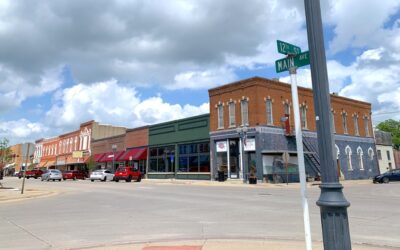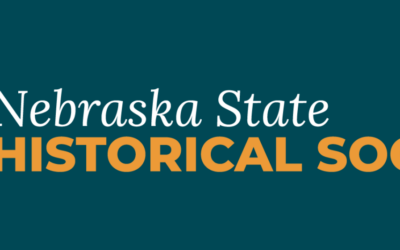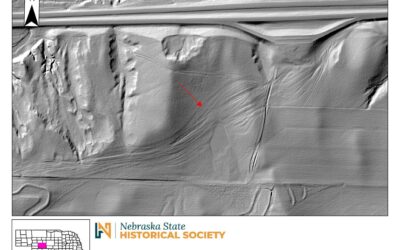In 1993 we published a special issue of Nebraska History titled “The Czech-American Experience.” It remains one of the most popular issues we’ve ever published, and quickly sold out. We’ve made it freely available online, linked below.
Between 1856 and World War I, some 50,000 Czech immigrants chose Nebraska as their new home. By 1910, first and second generation Czechs made up about 14 percent of Nebraska’s foreign-born population. Per capita, Nebraska had more first- and second-generation Czechs than any other US state.
Nebraska History, Vol. 74, Nos. 3 & 4
“The Czech-American Experience”
Guest Editor: Bruce M. Garver; Illustrations Editor: David Murphy
Foreword and Introduction (By Lawrence J. Sommer and Bruce M. Garver)
This special issue surveys important topics in Czech-American history and indicates how they are interpreted by several academic disciplines. It includes revised versions of seven papers presented at the September 1992 Symposium on Czech Immigration at the University of Nebraska-Lincoln.
Czech-Americans: The Love of Liberty
By Joseph G. Svoboda
The “love of liberty” persuaded many Czech immigrants to come to the United States. The author discusses its consequences for the development of Czech-American society.
Problems in the History of Czech Immigration to America in the Second Half of the Nineteenth Century
By Josef Opatrny
It is difficult to find and interpret information in official Habsburg government documents and other nineteenth-century printed sources. Even when that information is available, historians cannot necessarily distinguish among political, economic and personal motives for emigration.
Slovak Immigration to the United States in Light of American, Czech, and Slovak History
By Gregory C. Ference
Ference compares and contrasts the motives, experiences and achievements of Slovak and Czech immigrants. He shows how poverty and recent repression by Hungarian authorities influenced the life of Slovak immigrants settling in America.
German and Czech Immigration to Texas: The Bremen to Galveston Route, 1880-1886
By Lawrence H. Konecny and Clinton Machann
This study explores mass Czech and German immigration from points of departure at Hamburg and Bremen to places of settlement in the US. It shows that American railroad systems and trans-Atlantic steamship lines not only transported immigrants but actively encouraged immigration.
Czech Political Refugees in the United States during the Nineteenth Century
By Zdenek Solle
Šolle describes the development of the Czech Social Democratic movement. He highlights the career of Vojta Náprstek and other Czech advocates of liberty, known on both sides of the Atlantic for their journalism and public service.
Czech-American Protestants: A Minority within a Minority
By Bruce M. Garver
There were few Czech-American Protestants, but they received the assistance of mainline American Protestant denominations in establishing congregations and building meeting houses. They perpetuated the use of the Czech language and did important charitable work.
Dramatic Expressions: Czech Theatre Curtains in Nebraska
By David Murphy
Murphy describes and interprets the distinctive theatre curtains created in Nebraska by Czech immigrants and their descendants. He relates Czech-language drama to contemporary developments in Anglo-American theatre and to the Old World Czech tradition of using popular theatre to advance national objectives.
Evidence of Assimilation in Pavel Albieri’s Nevesta za padesat dollaru (Bride For Fifty Dollars)
By Clinton Machann
Machann analyzes a best-selling Czech-language novel set in America. The novel, published in Prague in 1897, reveals problems and expectations of Czech-American society that are typical of “ethnic literature.”
Relationships between Czechs and Slovaks in the United States during the First World War
By Karel Pichlik
Pichlík describes the rapport of Czech and Slovak ethnic organizations in the United States during the fight for an independent Czechoslovakia. During this exceptional period the interests of their adopted country coincided with the aspirations of their Old World relatives.
Czech-Americans: An Ethnic Dilemma
By Ivan Dubovicky
Ethnically specific activities among Czech-Americans diminished after the world wars. The generation born in America refused to adopt its parents’ romantic understanding of the Czech nation and its culture.
Czech Language Maintenance in Nebraska
By Mila Saskova-Pierce
The author explains why efforts to perpetuate use of the Czech language have been central to the experience of Czech immigrants and their descendants. The Habsburgs had replaced Czech with German in 1627. The nineteenth-century Czech National Revival reintroduced Czech as a means of sophisticated communication.
Czech-American Immigration: Some Historiographical Observations
By Frederick C. Luebke
Luebke’s essay lists major works of Czech-American history and outlines topics still available for scholarly exploration. He provides examples of works on other ethnic groups that use new concepts and methods.
Also of interest:
“Tools of Ethnic Identity,” Nebraska History (2007), By Raymond Screws
The “melting pot” view of American society may hold some truth, but settlements of Czechs and Swedes established in Saunders County, Nebraska, between 1870 and 1910 were surprisingly slow to melt.
“Old Cuts in New Wood: Traditional Czech Carpentry in the Central Great Plains,” Nebraska History (2003), By David Murphy
Early Czech farmers in Nebraska used the construction techniques of their Central European ancestors. Meticulous execution characterizes their carpentry.
“Rock in the Ground, Stone in the Wall: Czech Buildings from the Ogallala Deposition,” Nebraska History (1995), By David Murphy
The article describes the geology of a one-hundred-square-mile section of the South Divide in Cheyenne and Logan counties, Nebraska and Colorado, respectively. From this perspective, then it explores the building of the Czech immigrants in the use of the water-borne rock into the area.
(Updated July 2023)




